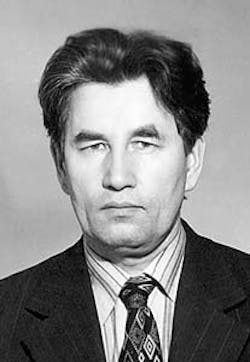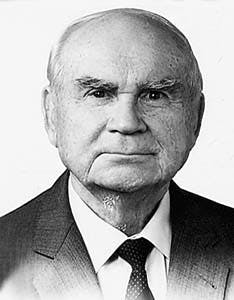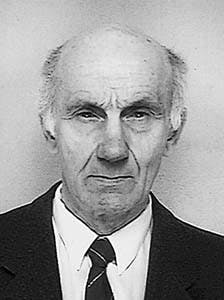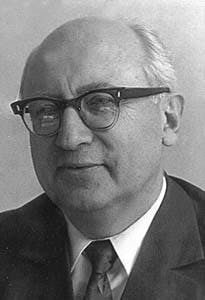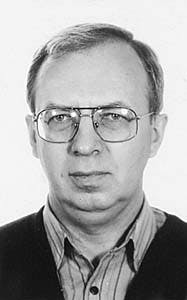Electro drill provides alternative drilling system
Bairas Ibragimovich Abyzbayev, Nicolay Konstantinovich BaibakovElectro drilling should be considered as a commercial drilling alternative to rotary, turbo, and positive-displacement motor systems.
Russian Academy of Sciences Institute of Oil & Gas
MoscowBronislav Vasilievich Baidyuk, Yakov Aronovich Gelfgat
Burovaya Tehnika
MoscowMichael Yakovlevich Gelfgat
Aquatic Co.
Moscow
Twelve million meters of electro drilling has proven its potential for drilling deep, directional, horizontal, and multilateral wells.
The electro-drilling system has been effectively applied in complicated geological conditions and in old reservoirs where weighted mud or different mud mixtures (gas, foam) are used. The greatest progress is expected for re-entry drilling, including laterals from the parent borehole that are cased out-of-operation, marginal wells, and offshore drilling.
Drilling experience in Bashkiria, Turkmenistan, Azerbaijan, and Ukraine strongly suggests that electro drilling provides savings in energy and material usage.
This technology combines some definite advantages of both rotary and hydraulic motor methods, including:
- A large range of drill-bit rotational speed
- Independence of energy transmitted to the drill bit from fluid flow
- The ability to use different borehole cleaning agents
- Controlled drilling of deviated and horizontal boreholes.
Historic developments
The first efficient electric downhole motor for deep drilling was developed in the U.S.S.R. between 1937 and 1940. Its development was based on the idea of using electric energy in an effective manner. This kind of energy has three advantages:- It is inexpensive and convenient for long-distance transmission.
- It is easily and efficiently transformed into other kinds of energy, permitting the use of automated technologies and remote control.
- It can maintain a constant, high power by compensating for transmission power losses through voltage increases.
The electro-drill housing was filled with pressurized oil that protected the mechanism from the bottom hole environment. Electric current was supplied through coaxial sections of a three-strand cable placed within the drill pipes, and the cable sections were connected with each other by sleeves and pins when making up the pipe joints
In 1940, the first well in the world was drilled near Baku with the use of the above-described system. Improvements continued until World War II, which disrupted further developments. In 1947, the work resumed and new, nongear electro drills with diameters of 250 mm were manufactured. Field tests proved the effectiveness of the new electro drill in Azerbaijan from 1948 to 1950, and in Bashkiria from 1950 to 1951.
Subsequently, a series of electro-drill developments were implemented with improved performance and reliability. This included a 215-mm, nongear, electro drill with a capacity of 145-250 kw at rotary speeds of 600-1,000 rpm and other variations.
These electro drills were used in Ukraine, Kuibyshev, and Turkmenistan from 1952 to 1963. About 500,000 m were drilled over 10 years under varying geological conditions, providing further information concerning the advantages and disadvantages of electro drilling. For a number of completed wells, mostly in Bashkiria, drilling performances improved by 15-20%, as compared to turbo drilling.
However, these performances were inconsistent, and impeded commercial application. To utilize electro drilling, repair shops with specialized equipment and highly qualified electricians had to be in place. Obtaining higher performances were limited by the following disadvantages:
- There was substantial down time because of the low resistance of the cable connections and from frequent break-downs of the electric-current supply system.
- There were substantial pressure losses, especially in the connections for the electric-current lead sections of the drill pipe joints.
- The high-rotation speed of the motor shaft dramatically decreased the meterage, especially in deep wells.
- The operational longevity of the electro drill was limited. In 1956, the electro drill lasted 25-30 hr between overhauls, and in wells deeper than 4,000 m, only 3-4 hr on the average.
- Small-diameter electro drills for drilling deep wells and lateral branches were unavailable.
- The cable positioned in the drill pipes prevented the use of wire-line instruments for whipstock and bottom-hole orientation.
- Competition with hydraulic downhole motors and rotary drilling in shallow wells failed to demonstrate the advantages of electro drills.
Improvements and standardization
From 1963 to 1970, an electro-drill standard was developed. It included electro drills with diameters from 127 to 240 mm as well as optional equipment. The first commercial electro-drilling system is shown in Fig. 1 [121,568 bytes]. The system consists of the following basic units:- An electro drill and drillstring assembly
- A telemetric system
- A drillstring with power cable
- An automatic bit feed regulator
- A control station
- A control board
- A transformer used to supply power to the electro drill.
Downhole equipment includes electro drills, electro drill-gear inserts, attachments for core sampling, check valves, devices for insulation inspection, mechanisms for well-path control, tools for borehole course stabilization, logging tools, and telemetric systems (Fig. 2 [17,897 bytes]).
The telemetric systems are the most important integral part of an electro-drilling system. Together with an electro drill, drilling control may be performed on the basis of on-line information using bottom-hole parameters. Power is supplied to the electro drill through a cable, discretely built into the drill pipe (Fig. 3 [40,776 bytes]). The cable leads to an electric-current collector (Fig. 4 [91,644 bytes]). The slipping contacts of the collector permits drillstring rotation.
Research carried out by the Kharkov Special Designing Bureau of Submersible Electro-Motors (SKTB PE) from 1963 to 1970, defined the current design features of the electro drilling system. Further significant developments of this system have not occurred in the former Soviet Union or other countries since.
The Russian electro drill
The Russian electro drill has a tubular body consisting of two basic units ( Fig. 5 [52,838 bytes] and Fig. 6 [138,961 bytes]):- A subsurface induction squirrel-cage motor
- An oil-filled spindle.
The axial load from the compressed part of the drillstring is transmitted through the electro-drill housing, bypassing the motor rotor. Torque from the motor is transmitted to the bit through the spindle shaft. Electro-drill specifications are provided in Table 1 [86,506 bytes].
Electric current lead
Power supply to the three-phase motor of the electro drill is performed through a double-wire cable in the drillstring (Fig. 2). It was possible to reduce diameter of double-wire cable connection up to 50 mm. The cable has an oval cross-section of 35 x 15 mm. This cable substantially reduces pressure losses.The electric current lead is designed for voltage of up to 3,000 v and for electric current up to 165 amp with a short-time current increase of 3 sec up to 400 amp. Cable sections can operate at pressures of 115 mega Pa and temperatures up to 130° C.
Each section of the electric-current lead cable ends with a contact bushing installed in a tool joint box on one side and a contact pin for the electric-current lead installed in a tool joint nipple on the other. A safety sleeve protects the contact pin from damage (Fig. 3).
Cable sections are used with 114, 127, and 140 mm drill pipes, as well as with 129-mm aluminum drill pipes with internal upset ends.
Telemetric system
In 1968, the first telemetric system was used in electro drilling in Bashkiria. This system was designed for continuous measuring of inclination and azimuth and for bent-sub positions. It consists of submersible and surface apparatus.The submersible apparatus consists of a surface meter that includes a set of meter sensors that form electric signals that measure downhole parameters. The surface apparatus consists of a receiving board for recording and for visual inspection of subsurface parameters.
It also has a connecting filter that connects the receiving board to the electric-current lead and is used to separate the power line's electric-current frequency (50 hz) from the system frequency. The surface meter is placed in a separate diamagnetic pipe installed above the electro drill (Fig. 2). The electric-current lead serves as a communication channel.
The telemetric system allows for inclinational measurements up to 110°, and azimuthal tool-face measurements up to 360°. Measurement error is less than 2.5%. Specifications are given in Table 2 [73,185 bytes]. The receiving board telemetric system is provided with an outlet for connecting standard recording instruments, as well as for instruments installed near the driller's console.
Electro drilling in Russia
By the early 1970s, the U.S.S.R. was the only country in the world where all three methods-rotary, turbo, and electro drilling-were used on commercial scale ( Fig. 8 [48,702 bytes]). The strategy was to apply each method to its greatest advantage, depending upon the situation.Burovaya Tehnika formulated and published rational field applications for the three drilling methods, and it was determined that drill bit rotation speed was the most important criterion. Other criteria, such as well path, bottom-hole temperature, and fluid type were also taken into account.
The reliability of electro drilling has increased considerably in Bashkiria. In 1996, Bashneft's drilling contractor, Ufimskoye UBR, drilled 56,000 m out of a total of 461,000 m using electro drills. From 1985 to 1990, the average annual meterage in the former Soviet Union was about 500,000 m.
From 1986 to 1988, the average mean-time between failures (MTBF) for electro drills was 90 hr, and the number of electric current lead break-downs was less than one per 1,000 m of drilling. The 12 best electro drills achieved an MTBF of 240 hr.
Turkemenistan deep wells (1970-1980)
The following wells were drilled with optimal bit speed with mud densities of 2.3 g/cc:- Kotur Tepe No. 808 - 5,042 m
- Kotur Tepe No. 809 - 4,700 m
- Komsomolskaya No. 27 - 4,803 m
- Komsomolskaya No. 31 - 4,616 m
- Komsomolskaya No. 32 - 5,250 m.
Data from 1975 and 1976 showed that the reliability index for the electro-drilling system increased substantially. The average MTBF was 50 hr, and the number of electric-current lead break downs was only 2.5/1,000 m while drilling deep wells with weighted mud.
Directional and multilateral wells (1960-1980)
The Zagly-Zeiva No. 1183, located in Azerbaijan, was drilled to 4,000 m in steeply dipping formations. The well was drilled to the target by continuously controlling the azimuth and inclination. Electro drills were so successful in steeply dipping formations, that more than 10 directional wells were drilled in western Ukraine. These wells were spudded-in by turbo drills, but were subsequently drilled to the target with electro drills.
The multilateral Dolina No. 801 well, located in western Ukraine, consisted of a parent bore hole and four laterals (Fig. 9 [162,865 bytes]). This borehole complex also utilized electro drills. In total, 12 horizontal and branched lateral wells, including 11 development wells, were drilled in the Dolina field using electro drills. Initial daily production rate of the branched lateral wells obtained 70-150 metric tons vs. 8-10 metric tons for vertical wells.
Air and gas drilling (1970-1980)
A classical example highlighting the use of different circulating agents while electro drilling was shown by the directional well, Bitkov No. 726, drilled to a depth of 2,813 m in western Ukraine with a vertical deviation of 930 m.The surface hole was drilled to a depth of 196 m with foam because of lost circulation problems. Then an interval of hard rock was drilled from 196 to 1,452 m with air, followed by mud from 1,452 to 2,813 m. Through the combination of electro drills and gaseous agents, substantial increases in penetration rates were obtained, saving 52 days from the drilling prognosis.
Interesting results were also obtained in 1977 while drilling a cluster of three directional wells-Nos. 1270, 1271, and 1272-in the Zagly-Zeiva oil field of Azerbaijan. Average depths were 2,200 m. Two of the wells were drilled with foam to 1,100 m. Drill rates were much higher than at similar cluster wells-Nos. 1313, 1236, and 1237-drilled with turbo drills.
The meters/bit, penetration rate, and overall drilling rate were respectively 1.2, 1.7, and 1.67 times greater. It should be pointed out that the directional well path following an electro drill using a telemetric system is more accurate than turbo drilling without a telemetric system.
Horizontal drilling (1979-1990)
The first horizontal well using the electro drill, the Uzibash No. 196, was drilled in the Bashkiria oil field in 1979.Conventional drilling equipment and tools were used with the following well design:
- 426-mm conductor pipe to 26 m
- 324-mm surface casing to 320 m
- 219-mm production casing to 1,950 m
- 190.5-mm open hole to 2,385 m.
One of the wells was drilled in the New-Uzibash field, and four experimental wells were drilled in the Lemesinskaya oil field. Currently, electro drilling is used in Bashkiria and Tataria where horizontal wells are drilled in pay formations with thickness of 1.5-2 m.
Another horizontal well, the Kotur-Tepe No. 1630, successfully drilled under complicated geological conditions in Turkmenistan. The well obtained a depth of 3,653 m with a lateral section of 145 m. A similar well, No. 1632, was also drilled the Kotur-Tepe field. These wells produced six times more oil than local vertical wells.
A combination of electro drilling and short-radius, positive-displacement motor technology was used in Turkmenistan and in the Lemezinskaya field. This combination was used because short, electro drills with double-bent housing were unavailable. Specially designed, short electro drills were developed later.
In the Salymskoye oil field of Western Siberia, horizontal well No. 578 was drilled to a measured depth of 3,330 m with more than 300 m of deviation. A 127-mm electro drill was used in this well for the first time.
Future developments
Research in the 1980s showed that optimal rotational speeds cannot always be obtained while rotary drilling. Because of this, the positive-displacement motor was adopted as the most promising technology for improving drilling operations and controlling the well path while horizontal drilling (Fig. 8).Despite the large investments in research, however, this technology has not always provided the perfect solution. Hydraulic motors cannot always provide the required rotational ranges and smooth control. In addition, information transmission used in well path control for hydraulic systems is more expensive, less accurate, and has less communication capacity as compared to an electric-cable system.
Direct-current electro drilling is also very promising. This system allows the use of more reliable, space-saving, single-conductor electric-current leads that considerably decrease pressure losses in the drillstring, permitting fishing operations.
In addition, the rotational speed of a dc electro drill can be smoothly adjusted over a wide range. Dc electro drills have a higher overloading ability as compared to ac electro drills, enabling a net power increase to the motor.
Application of an integral cable instead of discrete cables is another attractive prospect and may be useful for coiled tubing (CT) drilling technology. However, such combinations require the development of a small-diameter electro drill and research into the field of CT power cable implementation.
Electro drilling may also find wide effective applications for the coal industry, mining, underground railway construction, trenchless pipe laying, and in other branches of industry for different purposes.
Acknowledgments
The authors would like to thank Jim Albright and Don Dreesen of Los Alamos National Laboratory, and William Maurer of Maurer Engineering Inc. A special thanks to Viktor Khalyavkin of Ufimskoye UBR, Boris Breslav with JSC Electroprivod (Electro-motors Research Institute), and to Stanislav Isakov with SKTB PE for their contributions to this article. We also thank Katya Sidorova for her excellent translation from Russian to English.Bibliography
- Fomenko F.N., Borehole Drilling With Electro drills, Nedra, p. 272, Moscow, 1974.
- Gelfgat Y.A., On the Rational Fields of Different Drilling Methods Application, Neftyanoye Khoziyastvo (Oil economy/equipment/management), p. 12, 1981.
- Ievropeitsev R.K., et al., First Horizontal Well Construction in West Siberia, Neftyanoye Khoziyastvo, Issue 12, 1986.
- Abyzbaev B.I., and Baidyuk B.V., Study on the Drill Bit WOB-RPM Rational Correspondence and the Tasks for Intensive Drilling Technology Development, VNIIBT, Nedra, Issue 66, Moscow, 1988.
- Gulatarov K.G., First Horizontal Well Construction in West Turkmenistan, Neftyanoye Khoziyastvo, Issue 8, 1991.
- Rizvanov N.M., et al., Horizontal Wells Drilling and Operation, Neftyanoye Khoziyastvo, Issue 2, 1996.
- Baibakov K.N., and Abyzbaev B.I., Electro drilling Problems and the Possible Ways to Solve It, Neftyanoye Khoziyastvo, Issue 5, 1996.
- Abyzbaev B.I., and Baidyuk B.V., Electro drill as a Transmitter of Downhole Information and a Research Tool, Russian Scientific Conference on the Oil and Gas Basic Problems, Vol. 3, Moscow, 1996.
The Authors
Bairas Ibragimovich Abyzbaev is a leading specialist at the Russian Academy of Sciences-Institute of Oil & Gas. He has 40 years' experience in the oil industry with a general specialization in electrodrilling. Abyzbaev graduated from Moscow Petroleum Institute in 1957 with a degree in mining engineering. He has published 40 articles.
Nikolay Konstantinovich Baibakov is a principal researcher and scientific adviser for the Russian Academy of Sciences-Institute of Oil & Gas. He is the former Minister of Oil and Gas and head of the State Planning Committee. He was a founder of the Fuel and Energy Complex in the U.S.S.R. and Russia, and has 65 years' experience in the oil industry. He holds a Doctorate in technical sciences, is an Honorary Member of the Russian Natural Sciences Academy, and is an Academician of Cosmos and International Fuel and Energy. Dr. Baibakov graduated from the Azerbaijan Petroleum Institute in 1932 with a degree in mining engineering. He was the first to promote the development of electro drilling in the former U.S.S.R. and is an author of 200 publications.
Bronislav Vasilievich Baidyuk is a research leader for the Scientific Production Amalgamation - Burovaya Tehnika (Vniibt). He has 45 years' experience in the oil industry with a general specialization in optimizing drilling process under different conditions. Baidyuk has a PhD in technical sciences and graduated from the Livov Polytechnical Institute in 1953 with a degree in mining engineering. He is the author of 150 publications.
Yakov Aronovich Gelfgat is the head of the department for the Scientific-Production Amalgamation - Burovaya Tehnika (Vniibt). He retired in 1992.He has 53 years' experience in the oil industry, specializing in drilling technologies including cluster, directional, horizontal, and underbalanced drilling.
Gelfgat was actively involved in electrodrilling applications for many years. He has a PhD in technical sciences and graduated from the Azerbaijan Petroleum Institute in 1939 with a degree in mining engineering. He is the author of more then 100 publications.
Michael Yakovlevich Gelfgat is president of the Aquatic Co., a firm involved with marine surveying and drilling operations. He has 25 years' experience in the oil industry with a general specialization in novel drilling technologies for deep oil and gas wells, including super-deep, onshore and offshore, scientific boreholes. Gelfgat has a PhD in technical sciences and graduated from the Moscow High Technical School - Bauman in 1971 with a degree in mechanical engineering. He is the author of 40 publications.
Copyright 1997 Oil & Gas Journal. All Rights Reserved.
